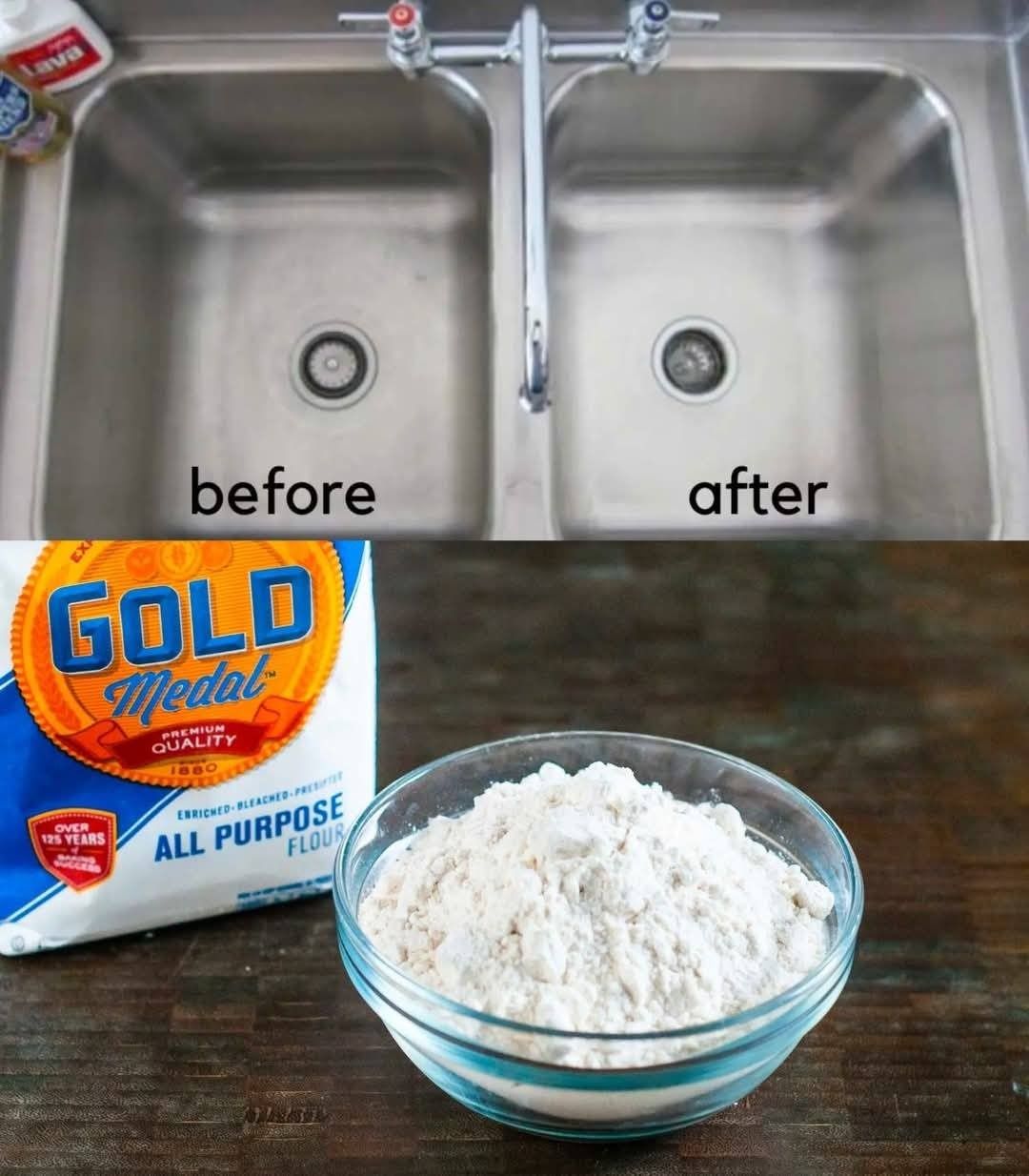ADVERTISEMENT
Instructions:
- Clean Your Sink: Start by washing your sink with warm water and a little dish soap. This will remove any surface dirt, grease, or food particles. After washing, dry the sink thoroughly with a towel.
- Apply Flour to the Sink: Once the sink is clean and dry, sprinkle a generous amount of all-purpose flour directly onto the surface. You don’t need to cover the entire sink; just a light dusting will be enough. The goal is to create a fine layer over the stainless steel where the flour can work its magic.
- Buff the Surface: Using a soft cloth or microfiber towel, begin gently buffing the sink in circular motions. The flour will act as a gentle abrasive, helping to polish the stainless steel. You may notice that the flour starts to absorb any leftover moisture and grime, leaving the surface smoother as you go. Work the flour into the sink’s corners, edges, and around the faucet, where buildup often accumulates.
- Wipe Away Excess Flour: After buffing the sink for a few minutes, take a clean, dry cloth and wipe away the excess flour. You should start to see a beautiful shine emerge as the flour lifts any stubborn water spots or streaks from the surface.
- Final Touch: If needed, take a damp cloth and give the sink a final wipe down to remove any remaining flour residue. Dry the sink completely to ensure a streak-free, glossy finish. You’ll be left with a shiny, sparkling sink that looks like it just came from the showroom!
Tips for a Long-Lasting Shine
While the flour trick is a fantastic way to restore the shine to your stainless steel sink, here are some additional tips to help maintain that gleaming look:
- Regular Cleaning: Keep your sink clean by wiping it down daily with a soft cloth to prevent water spots and streaks from accumulating.
- Use a Mild Cleaner: For deeper cleaning, occasionally use a mild all-purpose cleaner or a mixture of vinegar and water to sanitize your sink without harming its finish.
- Dry Immediately After Use: After using your sink, wipe it dry with a towel. This will prevent water spots and mineral deposits from building up over time.
- Avoid Harsh Scrubbers: When cleaning your sink, always use a soft cloth or sponge to avoid scratching the surface. Harsh scrubbers or abrasive pads can cause permanent damage to the shiny finish.
Why Flour Works for Shiny Stainless Steel Sinks
The science behind the flour trick is simple: stainless steel is prone to water spots, mineral buildup, and grease. Flour helps to gently scrub away these residues without damaging the surface, while its fine texture allows for a polished, streak-free finish. The flour’s powdery consistency absorbs moisture and dirt, leaving your sink looking gleaming and fresh.
Conclusion
If you’re tired of dealing with cloudy, streaky, or fingerprint-laden stainless steel sinks, give this simple flour trick a try. It’s a quick, effective, and eco-friendly solution that brings back the shine without using harsh chemicals or expensive cleaning products. Plus, it’s something you can easily do with items you likely already have at home.
Incorporating this flour trick into your regular kitchen cleaning routine will not only keep your stainless steel sink sparkling but will also save you time and money. A little flour, a soft cloth, and a few minutes of buffing will leave your sink looking brand new—and you’ll wonder why you didn’t try this sooner!
